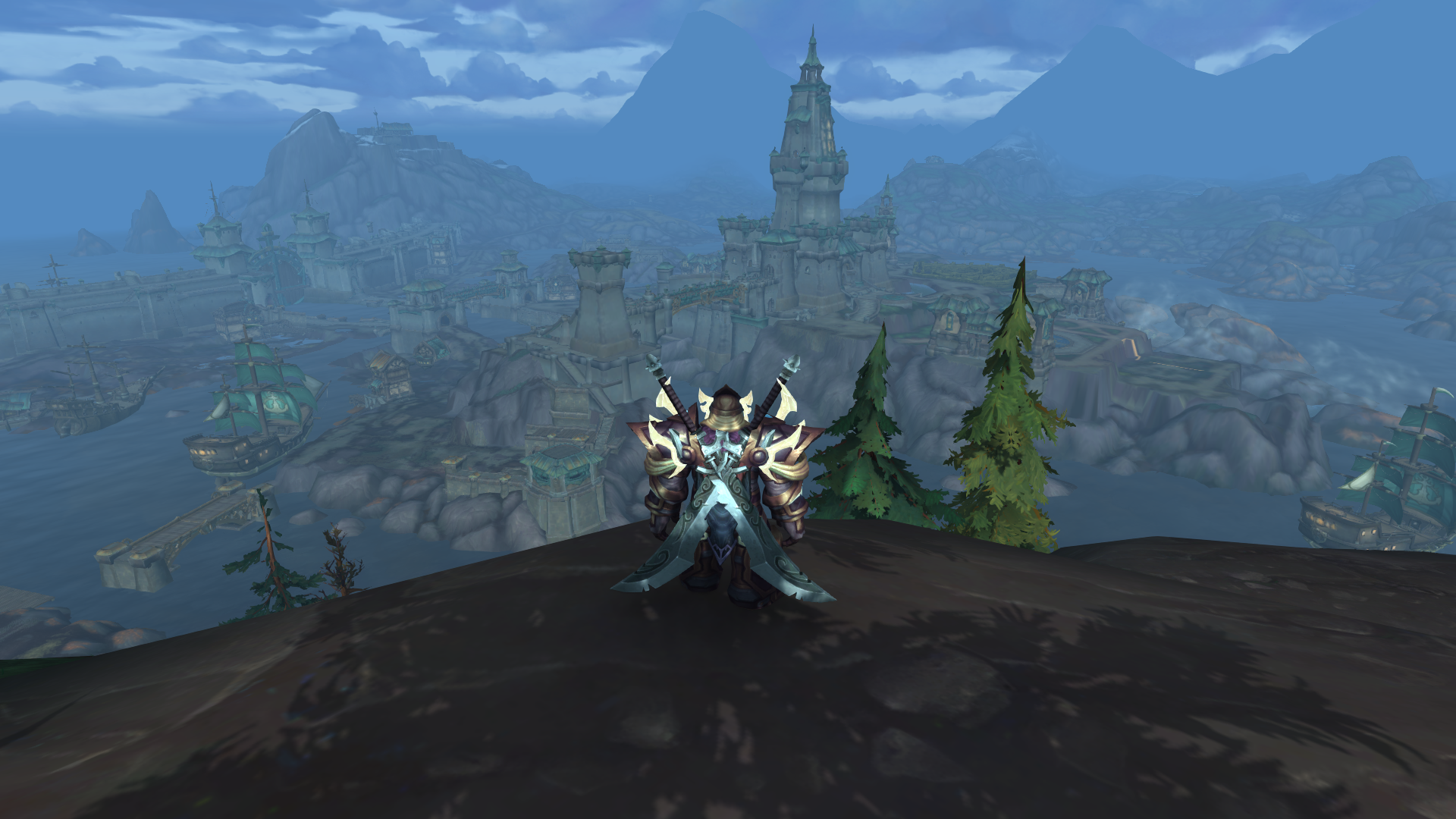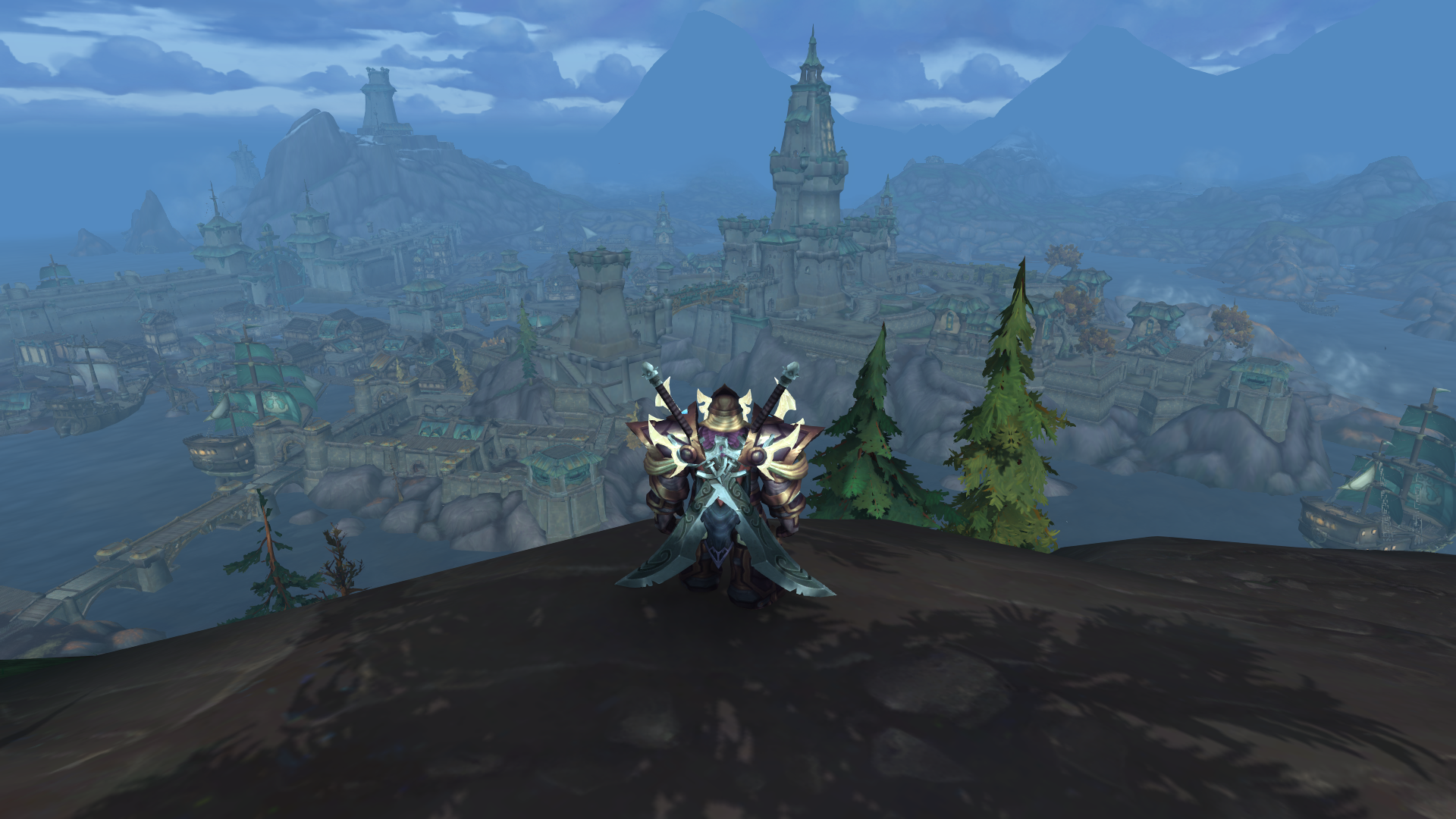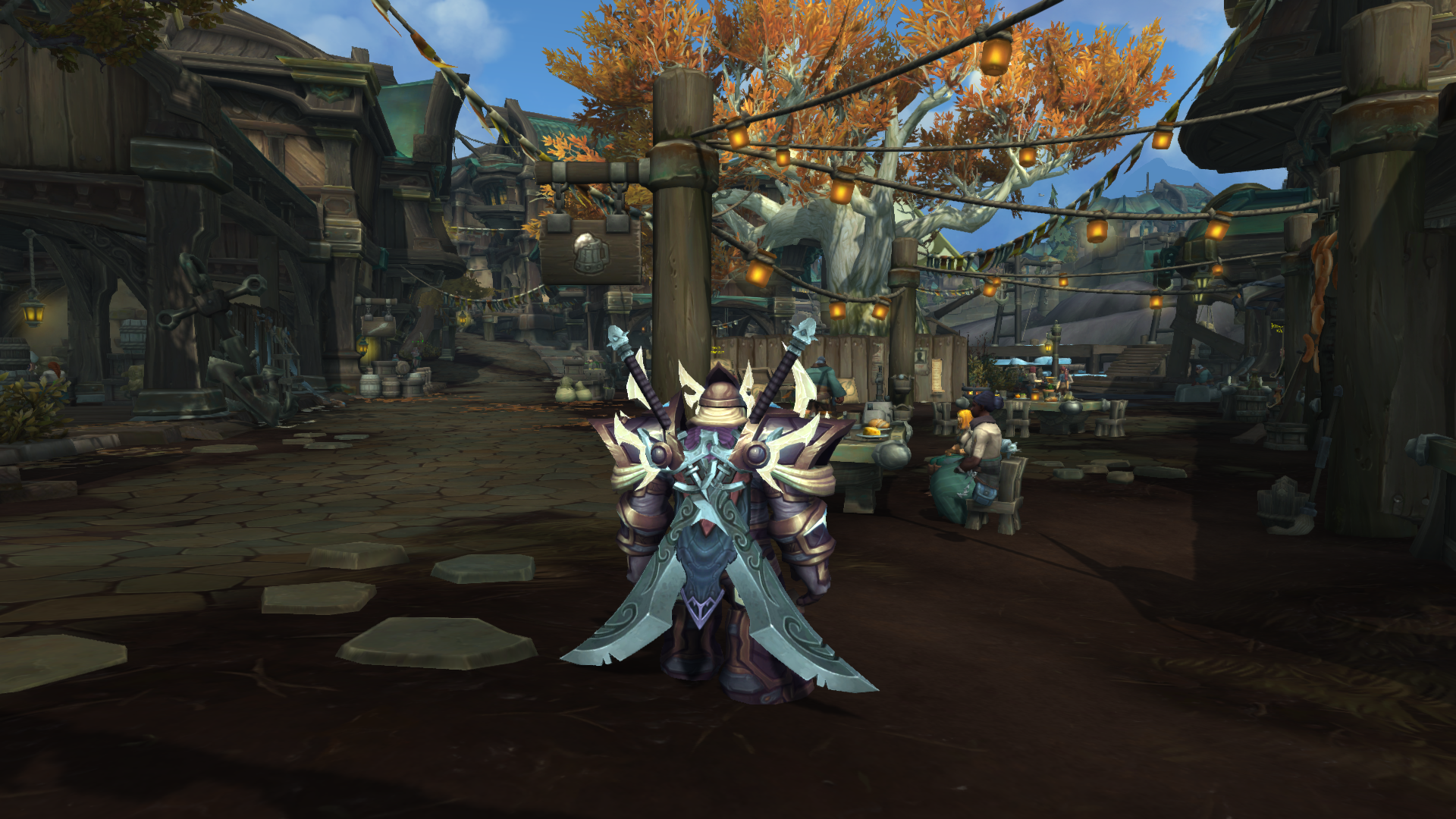
World of Warcraft is 14 years old. Its success comes with challenges most games never face, and graphics are chief among them. Blizzard’s MMO released the same year as Battlefield Vietnam, Half-Life 2, and Gran Turismo 4. Load those games today, and you probably won’t like what you see.
Blizzard is in a running battle with its own art. Expansions like Battle for Azeroth introduce new worlds, but the game’s artists must refresh the old as well, selectively polishing what’s most important. That polish has consequences for performance. The game has new graphics features, new textures, and new character models with higher polygon counts. The latest expansion even upgrades the game with DirectX 12 compatibility, while ditching DirectX 9 support.
What do you need to run World of Warcraft’s latest incarnation, and what settings should you change to improve performance?
The results are in
Before we dive into specific recommendations, we need to set a baseline. How does World of Warcraft: Battle for Azeroth perform on a modern computer? Might modern systems struggle with it? Or can virtually anything run it?
We fired up one of our most powerful test rigs, packing an AMD Threadripper 1920X processor and 32GB of RAM, all slapped on an Asus ROG Zenith motherboard. We tested with a Nvidia GeForce GTX 1050 Ti, GTX 1060, and GTX 1080 Ti. Of course, not everyone has such a powerful system, so we also tested on a Dell G3 gaming laptop. It had an Intel Core i5-8300H processor, Nvidia GeForce GTX 1050 Ti graphics chip, and eight gigabytes of RAM.
Our test loop began in Kul’Tiras, a major city in the new expansion, and ended in the wilderness of Tiragarde sound.
The results weren’t what you’d expect.
That’s right. The laptop significantly outpaced the beastly Threadripper 1920X system at every resolution and every detail setting. We also saw small differences in performance between each video card. Strangely, the GTX 1080 Ti wound up slightly slower overall than the GTX 1050 Ti.
Old man Warcraft
These are puzzling numbers, but they’re correct. We tested several times over and double checked every parameter we could imagine. This is how the game performs. The question is, why?
Blame its age.
World of Warcraft was released in 2004, which of course means its development began years earlier. At the time, most people were running Pentium III or AMD Athlon processors, and most developers believed that single-core processors running at insanely high speeds was the future. Dual-core processors weren’t found in gaming PCs. World of Warcraft, like its peers, was developed to make as much use of a single core as possible.
That doesn’t translate well to modern computers. There’s no shortage of games that make poor use of multiple cores, but World of Warcraft is exceptionally bad. It generally hammers just one core, leaving a few scraps of code to another three, and the rest remain untapped.
Our numbers make sense if you keep that in mind. Geekbench’s single-core test reached a score of 4,456 on the Dell G3 with its Intel Core i5-8300H processor. The AMD Threadripper 1920X hit a score of 4,364. Though its has fewer cores, the Core i5-8300H is quicker in single-core tasks, and that seems to be a deciding factor here.
We wanted to further confirm the result, though, so we took an even more direct route. We overclocked the Threadripper 1920X, upping the base clock from 3.5GHz to 4.2GHz.
As you can see, overclocking the processor netted a performance boost of about 10 percent. That’s not massive, but it was consistent enough to be noticeable, and reinforces our belief the processor is holding back performance.
It’s fair to say World of Warcraft: Battle for Azeroth is CPU-bound, but that’s not the entire story. You can’t pair it with any processor and expect the best results. You’ll need a processor with fast cores. That means Intel hardware is likely your best bet, and you’ll want to give preference to processor frequency over core count.
Direct X 12 processor performance comparison
World of Warcraft: Battle for Azeroth isn’t blessed with the most modern game engine, but Blizzard has made efforts to modernize it over the years. Patch 8.0, released just ahead of the new expansion, makes that obvious by ditching DirectX 9 support and adding DirectX 12. DirectX 11 remains available, and it’s the new default option.
That’s for the best, because DirectX 12 doesn’t fare well in World of Warcraft.
We saw a major performance hit with every tested configuration, and most configurations saw the DX12 option performance 10 to 15 percent behind DX11. That’s a big gap, enough that you’d likely notice it in gameplay.
Just ignore DirectX 12 for now and stick with DirectX 11, the default setting.
How do you make the game run better?
World of Warcraft’s age comes with baggage, but it’s not all bad. The game offers a high degree of graphics customization, something that used to be a must-have for PC games but, in today’s era of multi-platform game releases, is too often skimped. Players can tweak World of Warcraft: Battle for Azeroth in numerous ways to achieve an ideal compromise between looks and performance.
The buffet of settings can be controlled with the game’s preset slider, which ranges from one (the lowest) to 10 (the highest). You’ll even have your settings adjusted to a recommended level when you first boot the game. As you can see in our performance results above, the “6” preset is a good balance of performance and visuals. High-end systems can ramp the preset up to and 7 or 8. Dialing it up to 10, though, means sacrificing 60 FPS gameplay on even the most powerful PCs.
While the presets are a good baseline, you can gain more performance with minimal visual compromise if you tweak a few individual settings.
View Distance
MMORPGs like World of Warcraft: Battle for Azeroth promise epic, immersive worlds, but providing such a world is always a struggle because view distance can be a huge drain on system resources. The further you can see, the more objects must be rendered. There’s no way to escape that.
We weren’t surprised to find view distance hugely impacts performance. The scene in our gallery above rendered at 96 frames per second with view distance set to one, the lowest option. Cranking it up to 10 reduced that number to 58 FPS. That’s a cut of about 40 percent from one setting!
Yet view distance is also important to the game’s overall look. The lowest setting casts Azeroth under a permanent fog, obscuring the beautiful vistas Blizzard’s artists have worked hard to create. Ramping detail to maximum makes texture details visible even on distant mountains. The same mountains are mere shadows at lower view distances.
You’ll ultimately have to decide for yourself how much visual quality you’ll give up for performance, but make no mistake – this is where you’ll want to start when tweaking the game’s graphics.
Environmental Detail
Found just below View Distance, Environmental Detail is closely linked to it (the presets adjust View Distance and Environmental Detail in tandem). While View Distance determines how far you can see, Environmental Detail determines the distance at which detail geometry will render. This includes things like trees, rocks, and even important architectural details of buildings. Look at the bridges in the gallery below and you’ll notice they’re missing spans at the lowest Environmental Detail settings. Players who don’t know better might think the bridges have been destroyed!
Environmental Detail’s impact on visual quality is significant, and we wouldn’t recommend setting it below the “3” settings – going lower can obscure important details at range and may leave you confused.
Its impact on performance is also large, however. We saw an average of 92 FPS with this setting at “1,” which plummeting to 54 FPS with the setting at “10.” That’s basically tied with the impact of View Distance, so you’ll want to tweak here to hit your ideal compromise between looks and speed.
Players should also note that Environmental Detail is dependent on View Distance. If you drop View Distance to its lowest settings, but leave Environmental Detail at the highest setting, the game doesn’t perform poorly. We assume that’s because the game doesn’t render details outside the player’s view distance. As a result, there’s no reason to set your Environmental Detail above your View Distance.
On the other hand, setting the Environmental Detail a few notches below the View Distance is a good idea. This lets you enjoy the game’s most breathtaking scenery without an excessive performance hit. You’ll be missing a few trees and boulders on the horizon, but we don’t think you’ll miss them.
Shadow Quality
Accurate shadows are also difficult for computers to render, and World of Warcraft: Battle for Azeroth is no exception. Adjusting Shadow Quality can have a big impact on performance. Dropping from Ultra High to Low can improve performance by up to 25 percent.
The most dramatic difference in quality comes in the leap from the “Good” to “High” preset. Bumping detail up to High sees the introduction of additional shadow detail on buildings and other world geometry, something that’s not present at “High” detail. These additional shadows are more accurate and tone down the game’s punchy art style.
The detail settings above “High” appear to improve the distance and resolution at which shadows are rendered. That reduces the jagged edges that are visible along shadow details at “High,” though some artifacts remain visible even at “Ultra High.”
While differences in Shadow Quality are noticeable, we think this is a great place to find the extra FPS you need for smooth gameplay. Why? Because World of Warcraft’s shadows aren’t amazing even at their highest setting. We don’t recommend going beyond “High.” The better presets aren’t easy to notice but can easily shave five to ten FPS from the game.
Lighting Quality
Lighting is another place World of Warcraft shows its age, as it lacks advanced lighting features you’ll find in newer games. Still, adjusting the quality of lighting can net you better performance and slightly change the overall visual tone.
Increasing quality from Low to Good makes an obvious difference in lighting, as new point light effects appear where you’d expect. Lanterns appear dull at Low, but pulse with an inviting glow at Good. The jump from Good to High is less obvious but does add some nuisances to the scene that make it a bit more realistic.
If you can get by with Low, though, it’ll earn you a five to 10 percent improvement in framerate. It’s another good setting to examine if you want to leap over a performance hurdle with minimal decline in visual detail.
Whatever you do, don’t touch textures or remove anti-aliasing
The other settings available in World of Warcraft has only a minor performance impact individually, so they’re likely not worth the time of tweaking outside of the presets. However, we did want to note two settings you really shouldn’t lower if possible.
Texture detail is the first of these. Decreasing this setting has a huge impact on visual quality. World of Warcraft is particularly sensitive to this because its artists use texture art to simulate what the game’s aging engine can’t do.
You might think this drastic change in quality would come with a leap in performance, but it doesn’t. Switching to Low from High improves performance by less than five percent. We suggest you leave this setting at High.
Anti-aliasing also has only a minor impact on performance, yet it’s hugely important to visual quality. World of Warcraft features highly detailed character and armor models with many fine artistic elements. Going without anti-aliasing makes jagged edges a constant eyesore. Using FXAA or MSAA reels in the problem, and neither setting reduced performance by more than five percent in our tests.
Conclusion
World of Warcraft: Battle for Azeroth suffers terrible optimization for modern computers. It’s also an easy game to run smoothly.
These statements aren’t as contradictory as they seem. Yes, it’s true the game performed passably on our test desktop powered by an AMD Threadripper processor, but the game also ran well on a Dell G3 gaming laptop, exceeding 70 frames per second on average at the “6” detail preset.
Gamers with extreme high-end systems are likely to be disappointed by the game’s CPU-bound nature, which renders the power of top-tier graphics hardware pointless. Yet gamers with affordable hardware shouldn’t have trouble.
If you do need to improve the game’s performance, checking the View Distance, Environmental Detail, and Shadow Quality will give you the tools you need. Dropping these settings few notches will net you easy gains that make 60 FPS gameplay a reality on mid-range modern hardware.


































